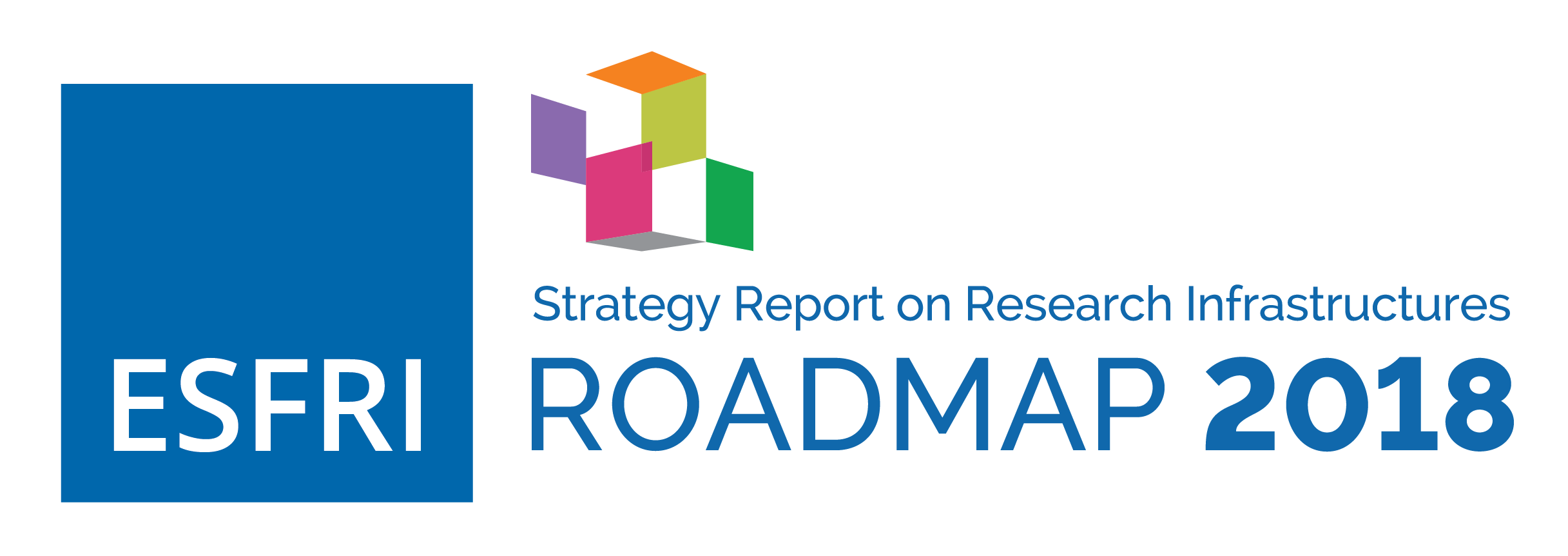Biosphere
BIODIVERSITY AND ECOSYSTEMS
Biodiversity research integrates the study of the diversity and variability of Life on Earth – namely terrestrial, marine and freshwater ecosystems, and including diversity at genetic, species and ecosystems. Ecosystem functions refer to the structural components of the ecosystems – e.g. water, soil, atmosphere and biota – and how they interact with each other, within ecosystems and across them, and how they interact with societal activities.
A better understanding of the interconnections, including quantitative relations, between biodiversity and ecosystem services will allow a better response to Grand Challenges, namely those included in the Sustainable Development Goals.
Biodiversity plays a central role in ecosystem functioning and provision of ecosystem services and is thus linked to key Societal Challenges such as a secure and safe supply of food and water and other natural resources, human health, energy as well as climate regulation and pollination. The biodiversity and ecosystem research is highly complex not only because of necessary multi-spatial and multi-temporal approaches, but also because associated time scales can range from microseconds up to millennia. Therefore, biodiversity and ecosystem research requires a multiand interdisciplinary integrated approach.
Over the past 50 years or more, ecosystems have changed dramatically due to human pressure. Ecosystems have been affected by soil exploitation, land-use change – for example formation of large monocultures, over-exploitation of natural resources, habitat destruction and contamination. Furthermore,invasive species has resulted in biodiversity loss and disruption of natural communities. As a result, in Europe, a several species are threatened with extinction. For instance, it is estimated that 15% of all mammals are threatened with extinction, 13% of all birds, 37% of all fishes, 19% of all reptilesand 23% of all amphibians. These impacts affect the structure and functioning of ecosystems and consequently their sustainability. The land-use change which causes habitat destruction and the alien invasive species are the most serious threats to biodiversity, the loss of which is recognised to cause decrease of ecosystem services by affecting ecosystem functioning and stability. The effective strategies to control invasive species include the early detection, regular monitoring of the growth of invasive alien species populations, and prediction of future spread. Research Infrastructures could be instrumental to develop these strategies, providing facilities to mobilize, access and analyse data of citizen science, remote sensing, and develop species distribution modelling for current and future distributions.
In order to protect biodiversity, it is important to also understand the societal drivers, such as demographic, economic, socio-political, cultural and religious, and scientific and technological changes (Millennium Ecosystem Assessment, 2005) as well as their impact on the ecosystems – habitat change,invasive alien species, and overexploitation of species – and thereby indirectly identify reasons for biodiversity loss.
Ecosystem integrity is indispensable to reach the UN Sustainable Development Goals (SDGs)UN Sustainable Development Goals (SDGs) https://www.un.org/sustainabledevelopment/sustainabledevelopment-goals/. Goal 15 directly refers to terrestrial ecosystems: Protect, restore and promote sustainable use of terrestrial ecosystems, sustainably manage forests, combat desertification, and halt and reverse land degradation and halt biodiversity loss. Furthermore, standardised observations from the terrestrial ecosystem and biodiversity domain comprise essential climate variables (ECVs) and essential biodiversity variables (EBVs) and thus provide knowledge towards the UN Conventions on Climate Change (UNFCCC)UN Convention on Climate Change (UNFCCC) https://unfccc.int/ and Biological Diversity (CBD)UN Convention on Biological Diversity (CBD) https://www.cbd.int/.
Long-term observations and monitoring as well as long-term research programs are indispensable for the interpretation of ongoing ecosystem changes, including those responsible for biodiversity loss and erosion.
Current Status
The European landscape for terrestrial ecosystem and biodiversity RIs covers the complexity of the research agenda (see Figure 3). The ESFRI RIs are built on or closely connected to EU-funded projects such as Integrating Activities (IA).



Figure 3. Schematic landscape of biodiversity and ecosystem ESFRI Research Infrastructures.
- Observatories and Monitoring Facilities: the ESFRI Landmark ICOS ERIC, the ESFRI Projects DANUBIUS-RI and eLTER (Long- Term Ecosystem Research in Europe), the IA InterAct (ongoing), InGOS (until 2015), and SIOS (Svalbard Integrated Arctic Earth Observing System) (Integrating all observations, terrestrial, marine and atmosphere at Svalbard).
- Facilities for in situ and in vivo experimentation: The ESFRI Project AnaEE (H&F), the IA AQUACOSM.
- Biological collections, Data infrastructures and reference data: the ESFRI Project DiSSCo (Distributed System of Scientific Collections), the ESFRI Landmark ELIXIR (H&F), and the ESFRI Project MIRRI (Microbial Resource Research Infrastructure, H&F), the IAs SYNTHESYS (until 2017).
- e-Infrastructures for analysis and modelling: the ESFRI Landmark LifeWatch ERIC, and the IA IS-ENES (ongoing).
The size of the researcher community served by these RIs might be estimated using as proxy the number of researchers engaged with national and international ecological associations, which raises up to 10.000 in Europe and 40.000 worldwide and additional researchers from climate and GHG communities. Other direct users include officers of regional, national and European environmental agencies responsible for national inventories and nature conservation, local and national administration, and environmental NGOs supporting decision making and policy implementation.
The paradigm shift in terrestrial ecological research from searching for a unifying ecosystem theory to tackling specific Grand Challenges (and in addition a shift from ecosystem conservation to preservation of ecosystem services) is mirrored by all Research Infrastructures in the domain but differs in the degree of being conducted in the basic concept of individual RIs. With the strongest relation to the approach of ecological integrity, the ESFRI Project eLTERis tackling a broad spectrum of ecological challenges, however the theoretical base is starting from understanding ecosystems. The ESFRI Project AnaEE (H&F), providing experiments instead of observations, and with stronger focus on agriculture and food security, is starting a bit more specific from a defined set of ecological and societal challenges and has a more anthropocentric objective in the preservation of ecosystem services, food security as well as specific contributions to bioeconomy.
In contrast to the ESFRI Projects eLTER and AnaEE (H&F) with their basis in the ecological integrity approach or in a broad spectrum of related Grand Challenges, the ESFRI Landmark ICOS ERIC is following a cross-domain approach that aims to understand the carbon cycle and to provide necessaryinformation on the land-ecosystem exchange of CO2, CH4 and N2O with the atmosphere. The ESFRI Landmark LifeWatch ERIC has, similar to ICOS, a cross-domain approach and a focus on the Grand Challenges of preserving biological diversity and of protecting ecosystem health. The ESFRI Landmark LifeWatch ERIC is an e-Infrastructure without own observations and enables knowledge-based solutions to environmental managers by providing access to a multitude of sets of data, services and tools. Specific issues related with biodiversity research, the role of biodiversity in ecosystem functioning and conservation are addressed by the construction and operation of Virtual Research Environments (Virtual Laboratories & Decision-support Applications) where integrated models atthe meso- or higher scales are executed. The digitalisation of biological collections and the connection to genomics is a game changer in the biodiversity research aiming to close the taxonomic gap which still is a major limitation to biodiversity knowledge. Of the 8 million species that are estimated to exist, only 1.8 million are currently scientifically described. For some biological groups – insects, nematodes, and microorganisms – only 10% of the species are known, and many species become extinct without being discovered. Many parameters in taxonomy need specialized human efforts. The overall ensemble of RIs in the terrestrial ecosystem and biodiversity field covers comprehensively the scales from molecules to continents and responds to a wide range of environmental challenges.
Gaps, challenges and future needs
The Grand Challenges related to biodiversity, ecosystems and biodiversity are highly inter-related. Land-use change is usually accelerating both loss of biodiversity and climate change by release of CO2 and by creating agricultural monocultures or land degradation.
Firstly, urged by the biodiversity loss, the taxonomic gap needs to be overcome, in order to discover and describe the ¾ of the biodiversity still to be known. Rapid advances in genetic sequencing and ICT, including big data analysis of genetic sequences, and mass digitization can be integrated to provide more automated systems with respect to genomics, species and ecosystem analysis.
Other challenges are the invasive species which can affect native species and habitats, alter the ecosystem primary productivity and thus the carbon sequestration. Consequently, the RIs need to better integrate their data life cycles and to seek common geographical coverage of their observing infrastructures by co-location and a mutual strategy to fill geographical gaps. Observations and experiments need further scientific integration. Modelling can be a powerful tool for the conjunction of organismic and process-oriented approaches as well as multiple challenges perspectives in ecosystem analysis. However, most existing ecosystem models represent only facets and require further development.
Monitoring biodiversity and ecosystems changes requires also the development and implementation of the Essential Biodiversity VariablesPereira, H.M. et al., 2013. Essential Biodiversity Variables. Science 339, 277–278 https://doi.org/10.1126/science.1229931 as ecological data products underpinned on data and metadata standards, data quality and data preservation would ensure the needed interoperable resources to perform ecological studies and assessments.
The manifold connections to other fields, particularly Health & Food, but also Social Sciences and Energy are obvious. Agriculture and Bioenergy directly affect ecosystem integrity which itself is an important factor for human health, but also for food production. Environmental literacy and behaviour are important interfaces to Social Sciences.




